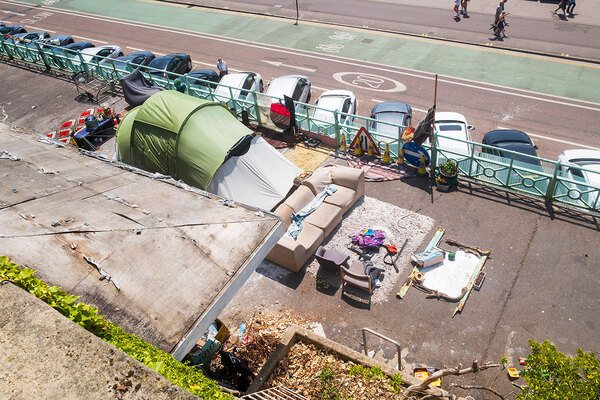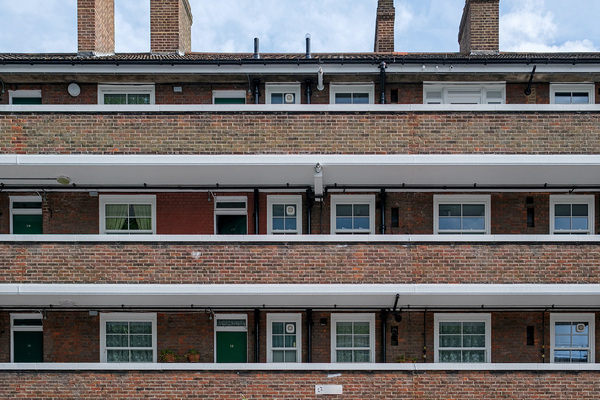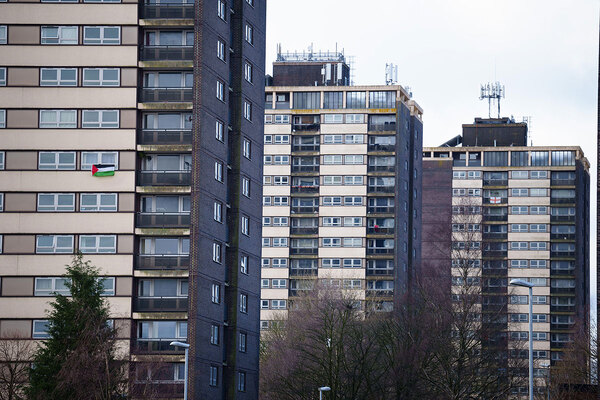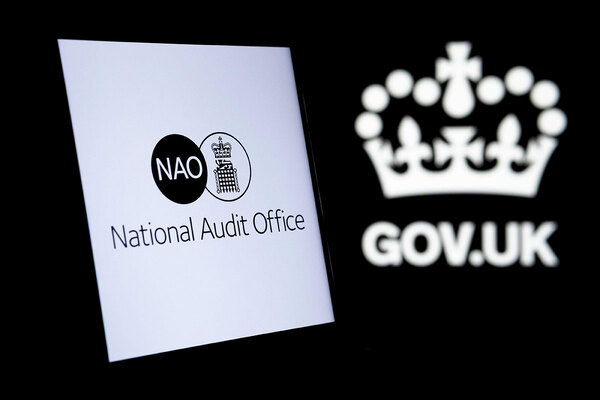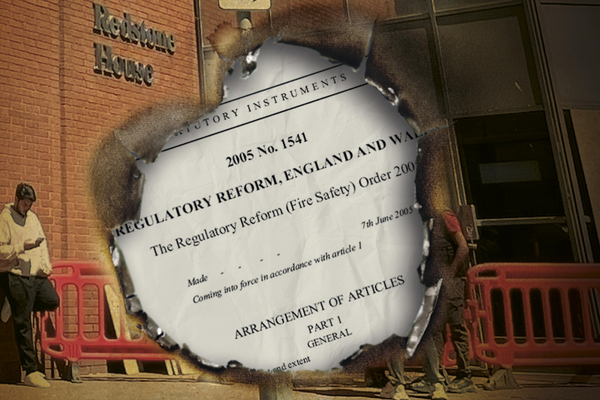CPD module: understanding and dealing with domestic abuse
Domestic abuse is a serious issue that can be difficult for social landlords to identify and deal with. Nicki Clarke, head of housing at Standing Together Against Domestic Abuse, explains the red flags to look out for, and best practice for dealing with domestic abuse cases. Read the article, take a test at the bottom of this page, earn CPD minutes
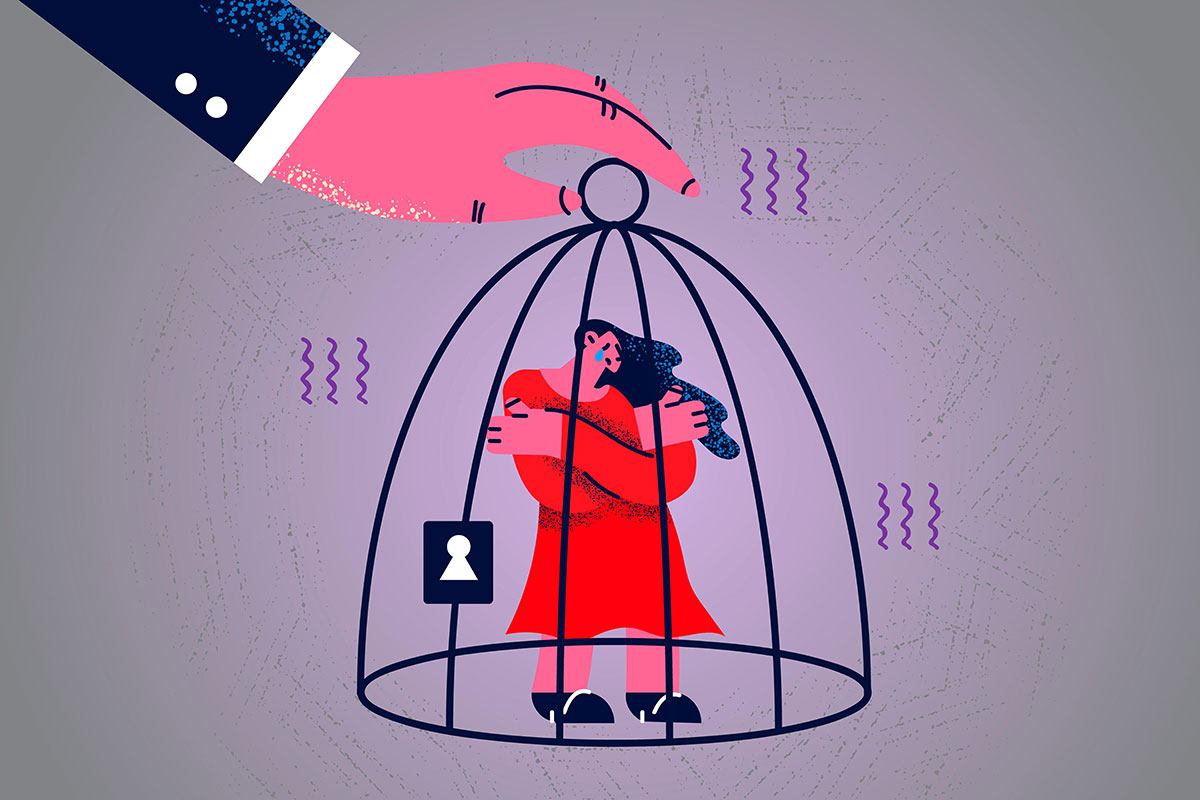

Learning outcomes
After reading this article, learners will be able to:
- Define domestic abuse
- Detail the different types of domestic abuse
- Understand the impact of domestic abuse on the affected individual, social landlords and wider communities
- Know the domestic abuse ‘red flags’ that resident-facing staff should look out for
- Explain how resident-facing staff should approach domestic abuse cases
- Understand what a multi-agency risk assessment conference (MARAC) is, and when to escalate a case to one
Domestic abuse is a serious issue that can be difficult for social landlords to identify and deal with.
This CPD article will explain what domestic abuse is and the different types. It will also explore the prevalence of domestic abuse and its impact on social landlords, as well as the warning signs that housing teams should look out for and how housing staff can handle cases sensitively and effectively.
What is domestic abuse?
Domestic abuse is abusive behaviour which takes place between two people who are personally connected to each other. This is often a partner, but can also be other family members.
Under the Domestic Abuse Act 2021, domestic abuse is defined as follows: behaviour of a person (‘A’) towards another person (‘B’) is “domestic abuse” if A and B are each aged 16 or over and are personally connected to each other, and the behaviour is abusive.
How does the definition of domestic abuse apply to under-16s?
Under Section 3 of the act, children are classed as victims of domestic abuse if they see, hear or experience the effects of abusive behaviour falling within the above definition and they are related to person A or B. If the abusive behaviour is directed towards the person aged under 16, it is generally classed as child abuse.
What are the different types of domestic abuse?
People typically think of domestic abuse as physical abuse, but it presents in many ways, which is why the term ‘domestic abuse’ is more appropriate than ‘domestic violence’.
Domestic abuse is always about one person in a relationship gaining power and control over the other person. The different types of domestic abuse can be seen as ‘tools’ by which abusers gain control.
Types of domestic abuse:
- Physical or sexual abuse
- Violent or threatening behaviour
- Controlling and coercive behaviour
- Economic abuse (controlling someone’s access to money and resources, such as housing)
- Psychological, emotional or other abuse
How prevalent is domestic abuse?
Statistics from domestic abuse charity Standing Together Against Domestic Abuse state:
- One in four women in the UK will experience domestic abuse in their lifetime
- Two million adults experience domestic abuse in the UK every year (1.3 million women, 695,000 men)
- An estimated 750,000 children are exposed to domestic abuse every year
What is the impact on survivors/victims?
A victim/survivor may not realise that what they are experiencing is domestic abuse, especially if there has been no physical violence.
Whether the victim/survivor recognises the abuse or not, the impact on them will include some or all of the following:
- Trauma
- Fear – for themselves, their children, other family members, pets
- A sense of isolation – of being unable to talk to friends or family about their situation
- Mental health issues – including increased stress levels, anxiety, depression and post-traumatic stress disorder
- Suicidal thoughts or ideation
- Hypervigilance – the feeling of walking on egg shells
It is important to remember that there is no such thing as a typical victim/survivor. Individuals might equally present as outgoing, aggressive, upset or reserved.
What is the impact on social landlords and communities?
Domestic abuse is equally present across all housing tenures, but a particular concern to social landlords for multiple reasons:
- Noise disruption. Domestic abuse cases can often present as noise nuisance, especially due to the high density of housing in social housing settings.
- Rent arrears. Rent arrears are a common indicator of economic abuse. This is usually because the perpetrator is restricting the victim/survivor’s access to rent money in some way, or letting them believe that the rent is already paid.
- Anti-social behaviour. Domestic abuse often gets reported as anti-social behaviour (ASB). Worryingly, perpetrators are often adept at making the victim/survivor out to be the aggressor. Around 40% of domestic abuse victims/survivors in social housing have an ASB complaint made against them, compared with 9% of the general public, according to research from the Chartered Institute of Housing Cymru.
- Trauma. Hearing or seeing domestic abuse can be traumatic or re-traumatising for others within a community, especially other victims/survivors.
What are the ‘red flags’ that resident-facing staff should look out for?
Resident-facing staff should maintain a level of professional curiosity when dealing with issues, such as noise complaints, ASB and rent arrears, and ask themselves, “Could this be domestic abuse?”
- Noise complaints. Housing officers should think critically about noise complaints and questions such as what was the gender of the person raising their voice; what was being said; did it sound like someone was being hurt?
- Rent arrears. Housing teams should seek to understand the reasons behind rent arrears, paying careful attention to what residents say. A statement such as, “Oh, he told me he’d paid that” should ring alarm bells.
- Repairs. Abusive households will often require repairs more often than non-abusive households and the costs involved with repairs are much higher. Repairs teams should be trained to identify and report warning signs, including frequent breaking of a bathroom-door lock (often the only lockable refuge for a victim/survivor) or other door locks; punch and kick marks in walls; locks on the outside of internal doors – these could have been used to keep somebody inside.
- Property restoration costs. The cost of restoring a property back to a lettable standard will often be much higher for occupants who were in an abusive relationship.
- Frequent house moves. People in abusive relationships request property moves, such as a mutual exchange, more frequently than those not in abusive relationships – often to hide the abuse from communities.
What should staff do if they suspect a resident is being abused?
Speak to the victim/survivor
Housing staff will need to speak to the victim/survivor without the perpetrator around. A completely safe time could be when the perpetrator is at work, or when the victim/survivor can come into the office.
How staff approach the conversation will depend on the relationship they have with the individual, but fundamentally they will need to ask the resident if they are safe and if everything is OK.
When speaking to a victim/survivor, staff should avoid the term ‘domestic abuse’. Many victims/survivors will not recognise that domestic abuse is what they are experiencing.
Instead, staff should let residents know that they are concerned about them (they might mention a concerning noise complaint, for example), that they are there to help – including with issues such as rent arrears – and that anything the victim/survivor chooses to tell them is completely confidential.
Use a victim/survivor-led response
The response of staff to a domestic abuse case should be victim/survivor-led. Since the victim/survivor has been controlled and given little choice, it is important that staff give them agency by listening attentively and trying to meet their wishes as far as possible.
Involving colleagues and other services
Resident-facing housing staff should always discuss domestic abuse concerns with a manager. They should also consider asking other colleagues who interact with the individual, such as repairs workers, if they have concerns.
Liaising with other professional services, including the police and social services, might be helpful. They could have more information or be better placed to approach the victim/survivor.
When and how should staff escalate a case?
If a housing officer suspects that an individual is at very high risk, for example a situation which is life-threatening or could leave them seriously injured, a domestic abuse, stalking and honour-based violence (DASH) risk assessment should be completed and a referral should be made to a multi-agency risk assessment conference (MARAC).
A MARAC is a meeting attended by representatives from multiple statutory and voluntary sectors – including the police, health, housing and child protection – where information is shared on the highest-risk domestic abuse cases. More information on how to make a MARAC referral can be found on the SafeLives website.
Case study
A female tenant with a sole tenancy was reported for noise nuisance. While investigating the report, housing officers found the tenant was pregnant, and very clearly experiencing physical abuse and violent sexual abuse most nights.
Based on the information they had, housing staff made a MARAC referral immediately and a multi-agency support response was put in place to help the victim/survivor.
The perpetrator was removed from the property, enabling the victim/survivor to remain safely in her home.
What challenges might housing staff face in dealing with domestic abuse cases?
- Victims/survivors insisting that everything is OK. They might fail to recognise the abuse, deny what is happening to them, or feel that they are the one causing the problem. In this case, housing staff should approach gently and ensure the victim/survivor knows that the door is always open for a confidential conversation.
- Perpetrators pretending to be the victim. This is increasingly common. If residents have made counter-allegations against one another, housing officers need to ask the right questions to carefully unpick who the perpetrator is and who the victim is – making sure not to assume they are ‘both as bad as each other’.
What are social landlords’ responsibilities in domestic abuse cases
Local authorities are legally required to provide safe accommodation for victims/survivors of domestic abuse and their children under Part 4 of the Domestic Abuse Act 2021.
However, the Regulator of Social Housing requires all housing providers to have a domestic abuse policy in place, and to work with other agencies to enable victim/survivors to access appropriate support and advice.
Overall, domestic abuse is a safeguarding issue, in which someone in a property is being abused by another person. As such, housing providers should respond in line with safeguarding requirements for the victim/survivor and any children living in the property.
Summary
Domestic abuse is always about one person in a relationship gaining power and control over another, and it can manifest in many different ways.
In addition to the impact on victims/survivors themselves, domestic abuse can cause a range of issues in social housing settings, and social landlords have a duty to safeguard and support residents who could be at risk of domestic abuse.
While domestic abuse can be difficult to identify and deal with, there are tell-tale signs that resident-facing housing staff can look out for and steps they can take to ensure victims/survivors are approached and supported in the best possible way.
Now get your CPD minutes
Next, answer the questions below. Get all the questions correct and you will receive a certificate confirming your award of 30 CPD minutes within 10 working days via email. Get any questions wrong and you can retake the test by refreshing your web browser.
References and further reading
- DAHA accreditation, a benchmark for how housing providers should respond to domestic abuse in the UK
www.dahalliance.org.uk/membership-accreditation/what-is-daha-accreditation/ - Domestic Abuse Housing Alliance (2018), Safe at home: the case for a response to domestic abuse by housing providers
www.dahalliance.org.uk/media/10154/safe-at-home-report-safelives.pdf
Other recent CPD articles on Inside Housing Management
CPD module: understanding and dealing with domestic abuse
Nicki Clarke, head of housing at Standing Together Against Domestic Abuse, explains the red flags to look out for when it comes to domestic abuse and best practice for dealing with such cases
CPD module: understanding and addressing hoarding
Lynsey Grundy, tenancy support manager and hoarding specialist at Southway Housing Trust, explains how to identify and support those struggling with hoarding
CPD module: data protection – supporting residents while also safeguarding their private information
Data protection is about more than compliance – it is about keeping customers safe and providing the best possible services. Rich Brameld, group head of data protection, nominated data protection officer and Caldicott Guardian at Riverside Group, explains more
CPD module: tenancy fraud – how to spot it and how to fight it
Stephanie Toghill, head of housing investigations at Islington Council and vice-chair of the Tenancy Fraud Forum, explains what tenancy fraud is, how it occurs and how to tackle it
CPD module: building reciprocal relationships with residents
Reciprocity is essential for social landlords to build successful relationships with residents. Anna de Souza, head of resident engagement at Peabody, and Ingrid Smith, communication lead and member of Peabody’s resident-led panel, explain how to go about it
Subscribe to Inside Housing Management and sign up to the newsletter

Inside Housing Management is the go-to source for learning, information and ideas for housing managers.
Subscribe here to read the articles.
Already have an account? Click here to manage your newsletters.
Latest stories
